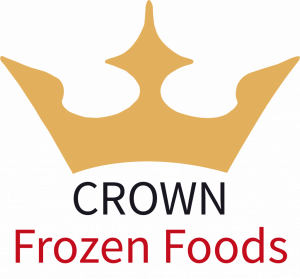Frozen foods have become a popular choice for people all over the world because of their convenience and longer shelf life. However, it is important to take proper precautions while handling and storing frozen food to ensure its quality and safety. In this blog, we will provide you with detailed information about the ideal temperature at which frozen food should be stored.
To maintain frozen food’s safety, storing it at a temperature of 0° F (-18° C) or lower is recommended. Freezing does not eliminate bacteria; it simply stops it from growing. Therefore, it is essential to handle and store food correctly to prevent the growth of harmful bacteria.
While frozen food can be stored indefinitely at 0° F, its quality will start to degrade over time. The longer the food is kept in the freezer, the more it will lose its texture, flavor, and nutritional value. Therefore, it is advisable to consume frozen food within the recommended time frames to enjoy the best quality and taste.
Introduction
Temperature plays a crucial role when it comes to preserving the quality and safety of frozen food. Proper storage is essential to prevent the growth of harmful bacteria, maintain texture, and preserve the nutritional value of frozen food products. In this blog, we will explore the recommended temperatures for storing frozen food, explore the science behind it, and offer practical tips to ensure your freezer becomes a reliable ally in keeping your food fresh.
Understanding the Freezing Point
Before we dive into the ideal storage temperature for frozen food, let’s grasp the basics of the freezing point. Water freezes at 32°F (0°C), and this principle is foundational for preserving perishable items. However, the freezing point can vary for different types of food, considering factors such as water content and composition.
Ideal Freezer Temperature
Maintaining the proper freezer temperature is crucial to keep your frozen food safe and appetizing. The general consensus among food safety experts is that freezers should be set at 0°F (-18°C) or lower. At this temperature, the growth of bacteria is significantly slowed down, ensuring that your frozen food remain safe for consumption over an extended period.
The Science Behind the Chill
Understanding why a specific temperature is recommended for frozen food storage involves delving into the science of food preservation. At lower temperatures, the activity of microorganisms and enzymes that cause food spoilage is significantly reduced. This is particularly important for maintaining frozen items’ texture, flavor, and nutritional content.
Enzymatic and microbial activities slow down as the temperature drops. While freezing doesn’t completely halt these processes, it drastically slows them down, providing an important time buffer before the food starts to deteriorate. This is why maintaining the recommended freezer temperature is vital for preserving the quality of your frozen foods.
The Impact on Bacterial Growth
Bacteria are omnipresent and can wreak havoc on perishable food items if given the chance. The recommended freezer temperature of 0°F or lower inhibits the growth of bacteria, preventing them from multiplying and causing spoilage. This temperature range is a key factor in ensuring that your frozen food remains safe for consumption, even after an extended storage period.
The low temperature not only hinders bacterial growth but also prevents the formation of ice crystals within the food. Ice crystals can alter the texture of frozen items, leading to freezer burn and a decline in overall quality. Adhering to the recommended freezer temperature can mitigate these risks, and enjoy frozen food that tastes as fresh as the day it was frozen.
Tips for Proper Freezer Maintenance
Maintaining the ideal freezer temperature is just one aspect of storing frozen food. Here are some additional tips to ensure your freezer remains a reliable ally in preserving the quality of your food:
Regular Temperature Checks
Invest in a reliable freezer thermometer and check the temperature regularly. This simple step helps you stay informed about any fluctuations and allows you to take corrective measures promptly.
Proper Organization
Efficient organization within your freezer can contribute to maintaining a consistent temperature. Avoid overcrowding, as this can hinder air circulation and lead to uneven cooling. Group similar items together and use labeled containers to keep track of the contents.
Quick Freezing
When adding fresh items to the freezer, ensure they are at room temperature or slightly chilled before freezing. This helps in quick freezing, preserving the texture and flavor of the food.
Avoid Temperature Fluctuations
Limit the frequency of opening the freezer door to prevent temperature fluctuations. Warm air enters each time the door is opened, and the freezer has to work harder to return to the set temperature.
Conclusion
In conclusion, the temperature at which frozen food is stored significantly influences its safety, quality, and longevity. The recommended freezer temperature of 0°F or lower is grounded in the science of food preservation, slowing down the activities of microorganisms and enzymes that lead to spoilage. By understanding the impact of temperature on frozen food and by implementing proper freezer maintenance practices, you can ensure that your freezer remains a reliable tool for preserving the freshness of your favorite frozen delights.
Read More: Frozen Food’s Impact on Reducing Food Waste




